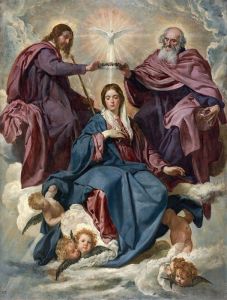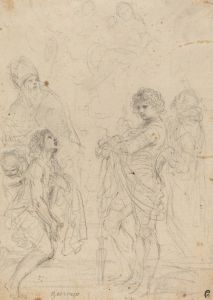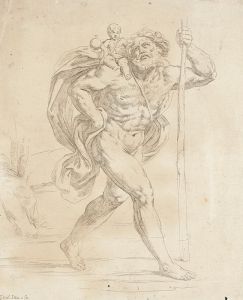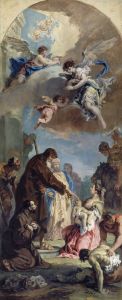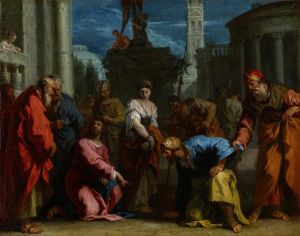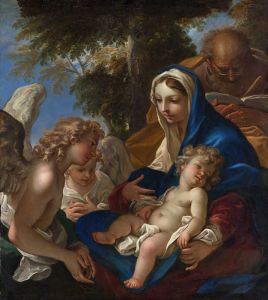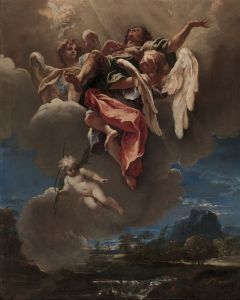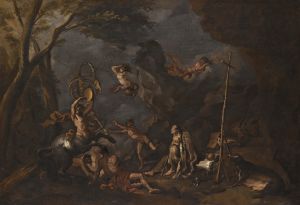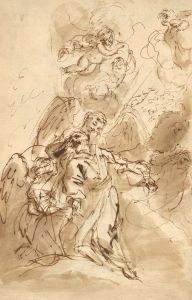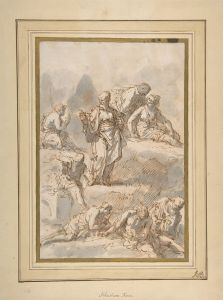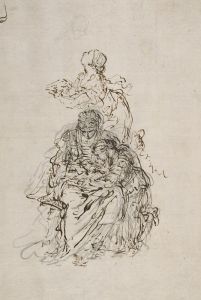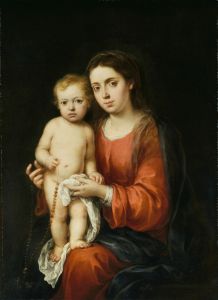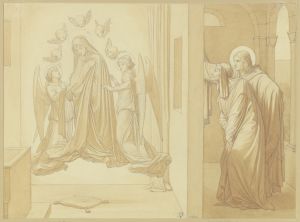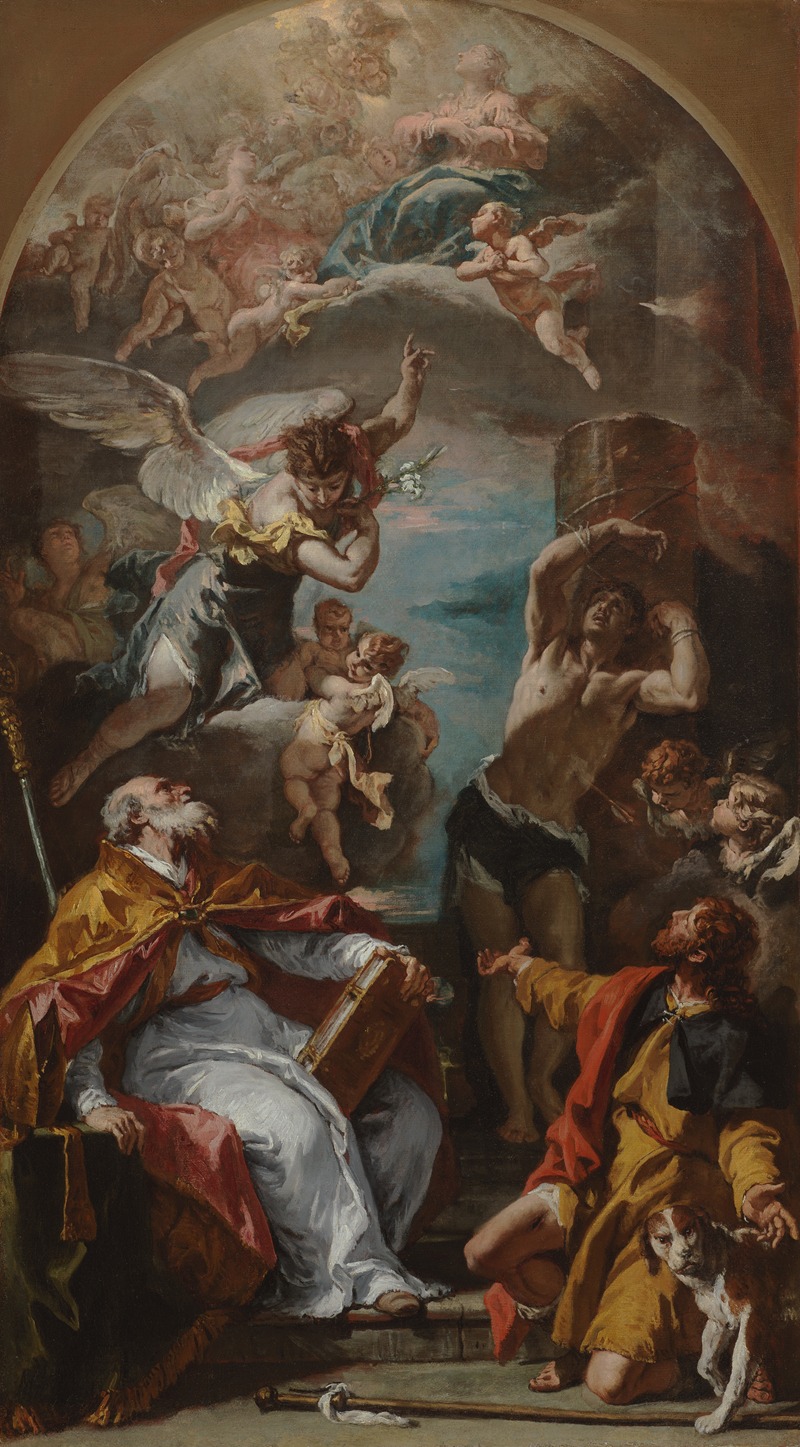
Glory of the Virgin with the Archangel Gabriel and Saints Eusebius, Roch, and Sebastian
A hand-painted replica of Sebastiano Ricci’s masterpiece Glory of the Virgin with the Archangel Gabriel and Saints Eusebius, Roch, and Sebastian, meticulously crafted by professional artists to capture the true essence of the original. Each piece is created with museum-quality canvas and rare mineral pigments, carefully painted by experienced artists with delicate brushstrokes and rich, layered colors to perfectly recreate the texture of the original artwork. Unlike machine-printed reproductions, this hand-painted version brings the painting to life, infused with the artist’s emotions and skill in every stroke. Whether for personal collection or home decoration, it instantly elevates the artistic atmosphere of any space.
Sebastiano Ricci's Glory of the Virgin with the Archangel Gabriel and Saints Eusebius, Roch, and Sebastian is a religious painting attributed to the Italian Baroque artist Sebastiano Ricci (1659–1734). Ricci was a prominent Venetian painter known for his dynamic compositions, vibrant color palette, and contributions to the development of the Rococo style in Italy.
This artwork depicts a sacred scene centered on the Virgin Mary, who is shown in a position of divine glory. She is surrounded by celestial light, emphasizing her spiritual significance. The Archangel Gabriel, a key figure in Christian theology as the messenger of the Annunciation, is also present in the composition, reinforcing the painting's focus on themes of divine intervention and grace. Additionally, the work includes Saints Eusebius, Roch, and Sebastian, each of whom holds particular significance in Christian iconography.
Saint Eusebius, often associated with early Christian leadership and devotion, is depicted in a manner that reflects his role as a bishop and defender of the faith. Saint Roch, venerated as a protector against plagues, is typically shown with a pilgrim's staff and a wound on his leg, symbolizing his miraculous healing. Saint Sebastian, a martyr and patron saint invoked during times of plague, is commonly portrayed tied to a tree or post, pierced with arrows, though the specific details of their representations in this painting are not fully documented.
The painting exemplifies Ricci's ability to blend dramatic Baroque elements with a lighter, more decorative approach that anticipates the Rococo style. His use of dynamic poses, flowing drapery, and a luminous color palette creates a sense of movement and divine radiance, drawing the viewer's eye toward the central figures.
While the exact date of the painting's creation is not definitively recorded, it is consistent with Ricci's mature period, during which he produced numerous altarpieces and religious works for churches and patrons across Europe. The painting reflects the broader cultural and artistic trends of the late 17th and early 18th centuries, particularly the emphasis on emotional engagement and theatricality in religious art.
The current location of the painting is not specified in available records, and further details about its commission or provenance remain unclear. However, it stands as a testament to Sebastiano Ricci's skill in conveying spiritual themes through his mastery of composition and color.





